

Matt Campbell
2026 Hyundai Tucson Hybrid review
2 Days Ago
The cheapest diesel Audi Q5 claims fuel economy and driving range superior to a petrol-electric hybrid equivalent.
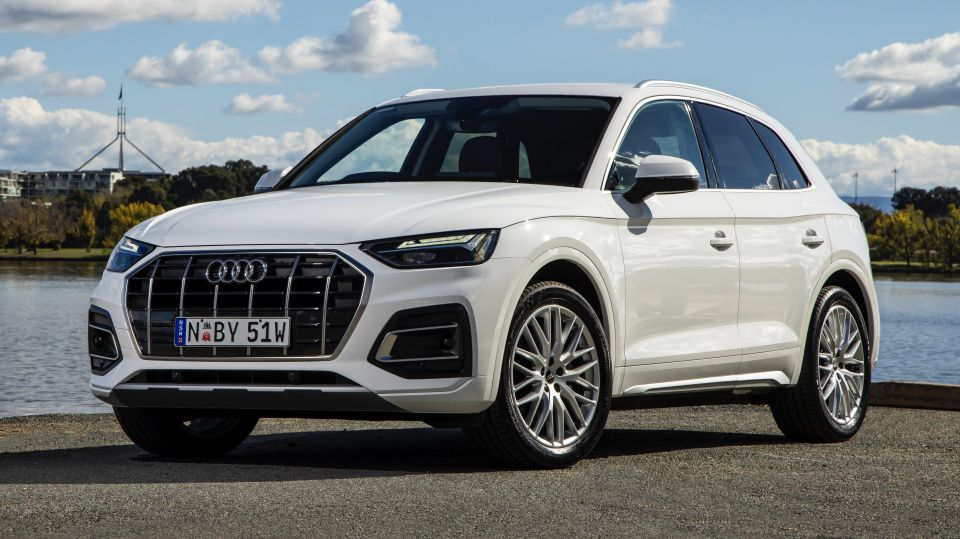
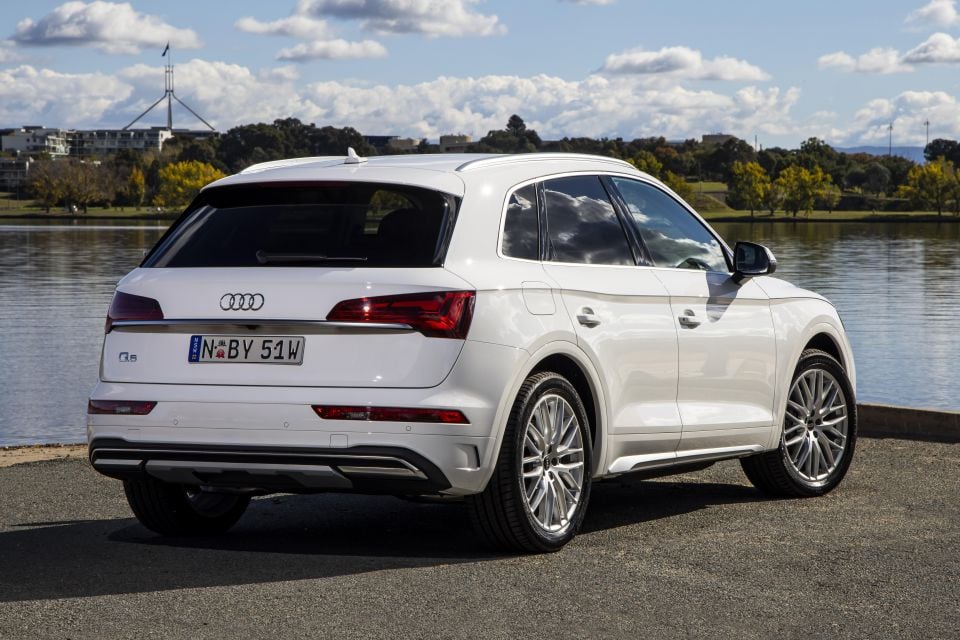

Quickly see how this car stacks up against its competition. Select any benchmark to see more details.
Where expert car reviews meet expert car buying – CarExpert gives you trusted advice, personalised service and real savings on your next new car.
The newly launched Audi Q5 35 TDI Limited Edition is both the cheapest and most fuel-efficient version you can buy, and serves as a reminder of the upsides of diesel.
It’s no excitement machine, but Audi claims ludicrous fuel consumption of 4.8 litres every 100km, which puts a typical hybrid in the shade – a Lexus NX350h uses 5.0L/100km – and makes it the most frugal diesel SUV on sale in Australia.
Moreover, it might hold appeal for those doing high mileage, given the theoretical driving range from its large 70 litre tank of 1400km between fills.
The new Audi Q5 entry point has arrived in limited edition form as driven here, but it’s expected to become a permanent member of the range, according to the company, presumably whenever stock levels normalise.

This base Audi Q5 grade costs $68,350 before on-road costs.
That’s the best part of $10,000 cheaper than the diesel BMW X3 xDrive20d ($77,900 plus on-roads) and petrol Mercedes-Benz GLC 200 ($78,114) entry models.
An entry Lexus NX350h hybrid is $65,600 plus on-roads, and the Volvo XC60 B5 Momentum is $69,490.

It’s also worth pointing out that the flagship Volkswagen Tiguan R costs $68,990 plus on-roads. It lacks the Audi’s badge, but it’s fully loaded and offers substantially more power.
Based on the Audi Q5’s list price, expect a drive-away price after State and dealer charges of around $75,000 drive-away.
MORE: 2022 Audi Q5 and Q5 Sportback price and specs
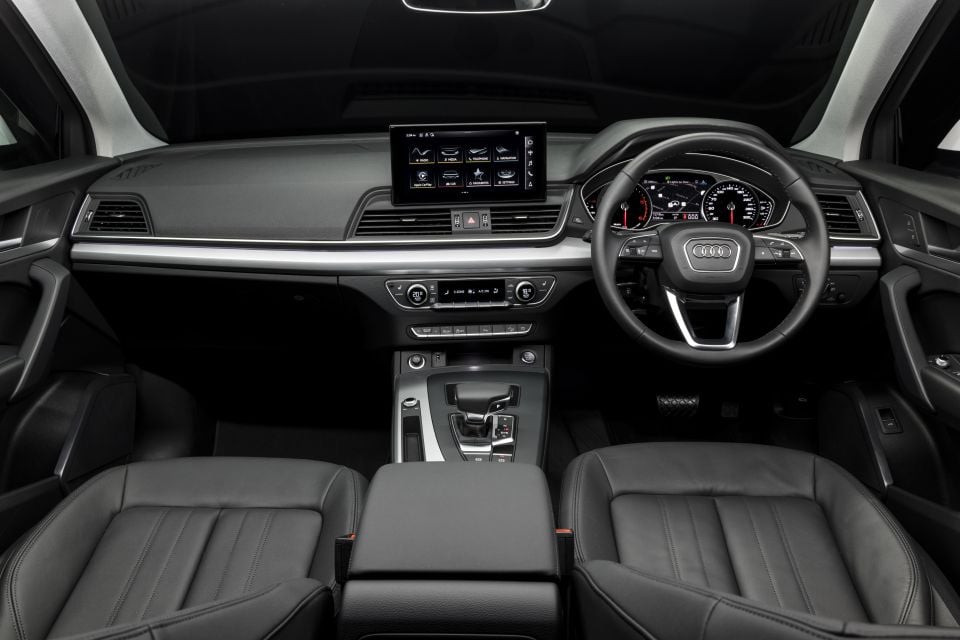
Buy your new car without the stress. It's fast, simple and completely free.

Great service from Travis and team, second time I have used this business would not hesitate to recommend them to anyone
Craig C.
Purchased a Ford Ranger in Sunshine Coast, QLD
CarExpert helped Craig save thousands on his Ford Ranger, now let us save you on your next new car.
Find a dealThe Q5’s interior, despite getting a recent update, does betray the car’s age somewhat.
But to me that’s actually a positive thing, because there are buttons, switches and dials – tactile things – instead of a multitude of touchscreens and haptic pads.
This is a true quality, conventional Audi cabin, in that its build feels bombproof, and its surfaces and touch points are all quite premium – with the notable exception of the upper doors, which would benefit from a smidgen more padding.
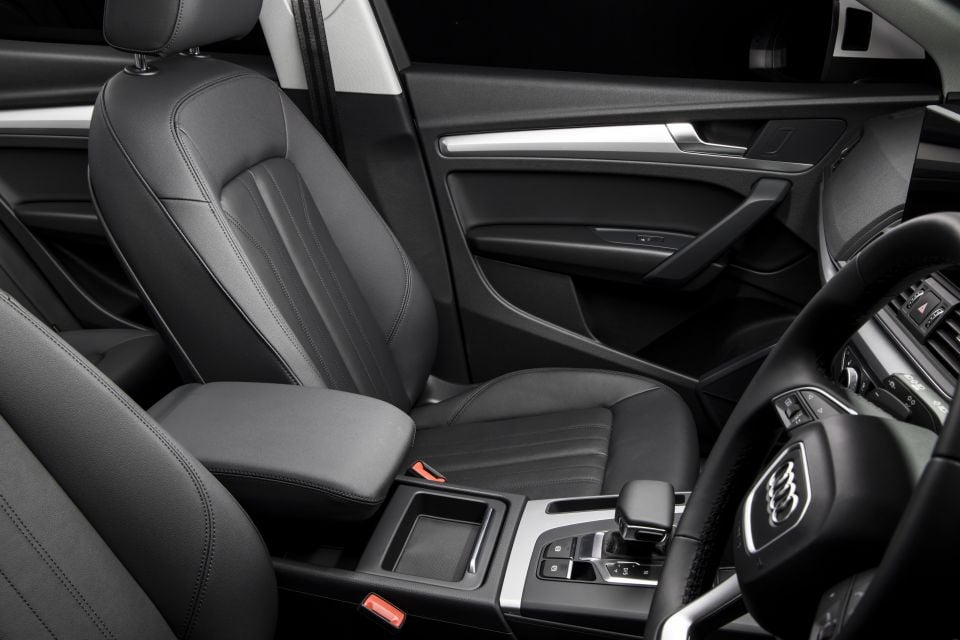
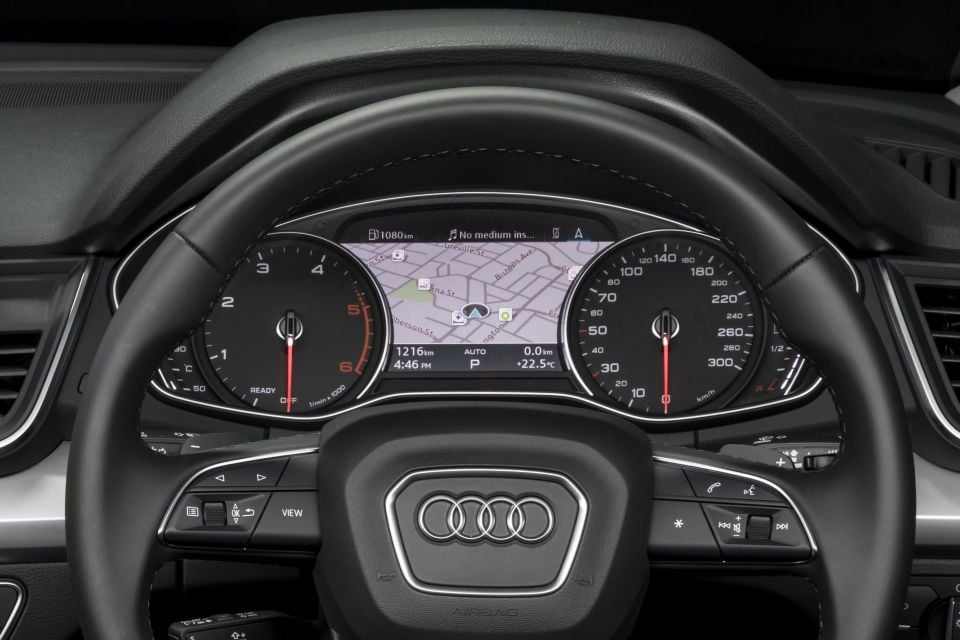
It also offers a great sense of space, thanks to the horizontal design language and the large side windows that let plenty of light in.
The powered and heated front seats are comfy and trimmed in good quality leather, likewise the steering wheel with its branded centre-piece and minimalist buttons and roller dials.
There are three stalks behind the wheel: the left-hand side for indicating, the right for wipers, and the lower-left one for the cruise control activation.
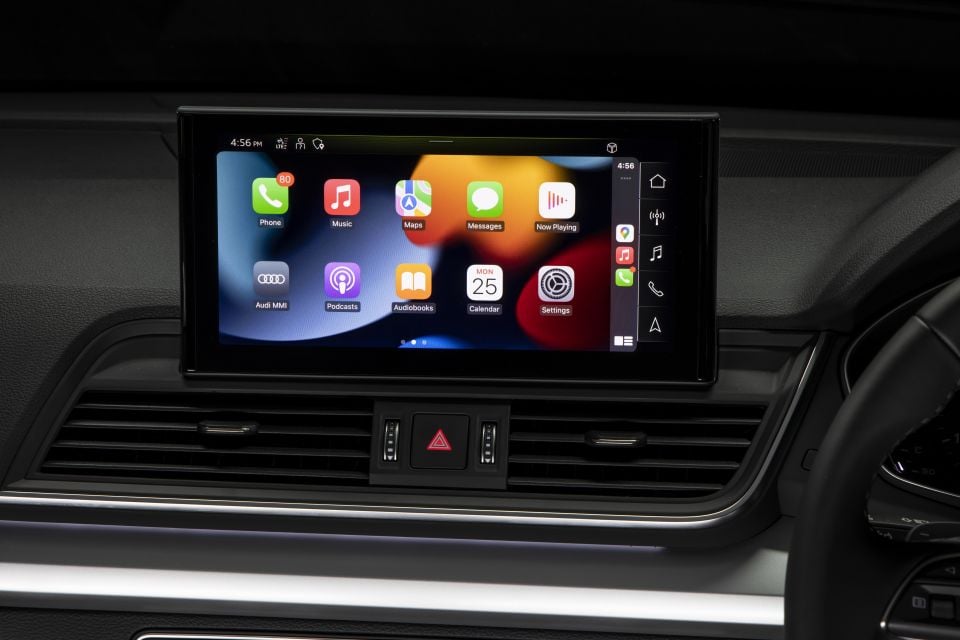
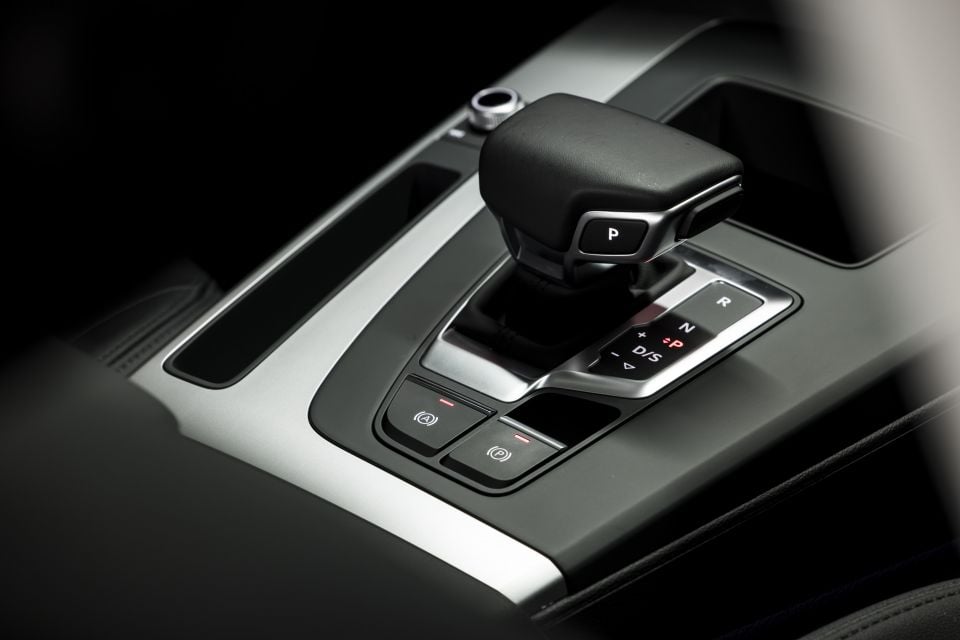
Behind the wheel is a large binnacle and a small digital TFT that can show maps, digitised speed readout, and trip data, flanked by analogue gauges with font reminiscent of a Porsche.
Analogue gauges are old hat these days, but I tend to view them rather as timeless, and am always glad to see them. But that’s just me, someone who prefers a winding watch to an Apple Watch.
The new 10.1-inch centre touchscreen is perched on the dash in rather ad hoc fashion, but the infotainment system is excellent in terms of response/loading speed and graphics, and offers wireless mirroring for both Apple and Android phones.

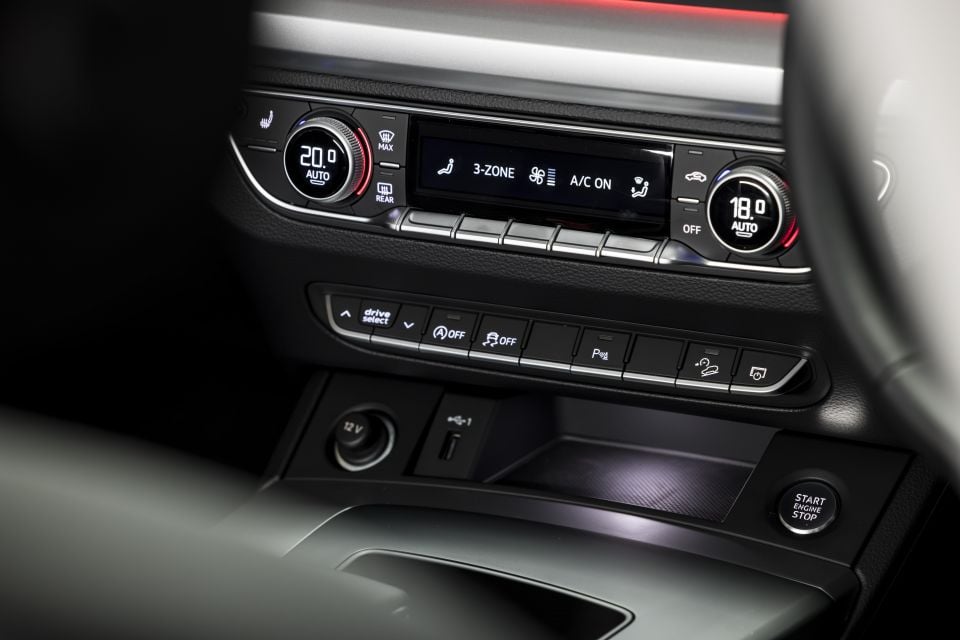
The home screen comprises a right-hand-side vertical shortcut toolbar, alongside square icons to direct you to key sub menus such as audio, phone, apps, navigation, and settings. It offers Google Map integration, and real-time weather readouts and fuel price tracking.
It also has a conversational voice control system, and connected services powered by two SIM cards.
Below the screen are vents, a contrast trim piece, and ventilation controls that are a joy to use: with knurled dials, digitised readouts, and damped touch-sensitive buttons.
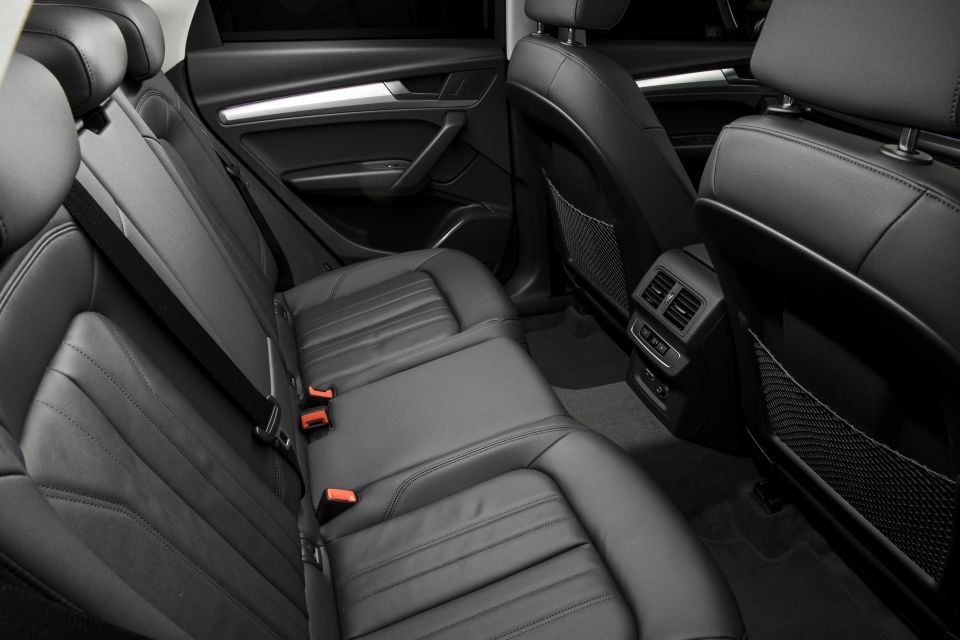
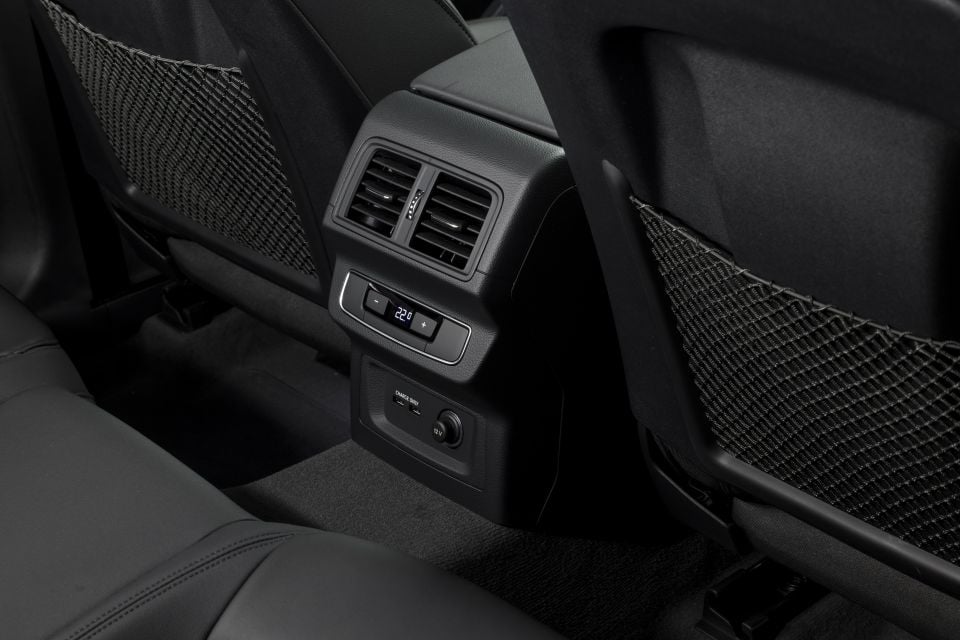
Below this is your starter button and 12V socket, plus a USB-A point (four total) rather than USB-C, and a rubberised storage nook without a wireless charging pad. There are a few small open nooks along the transmission tunnel as well as the classiest gear shifter money can buy.
The centre console lid covers a sliding shallow tray, which can be pulled backwards to liberate cupholders. There are also reasonably capacious door bins and glovebox storage areas.
Those back seats (two nice outboard bases with ISOFIX points and small centre bit with a large floor hump despite the lack of AWD) offer good headroom, and amenities such as storage netting, vents, temperature controls, and USB ports.
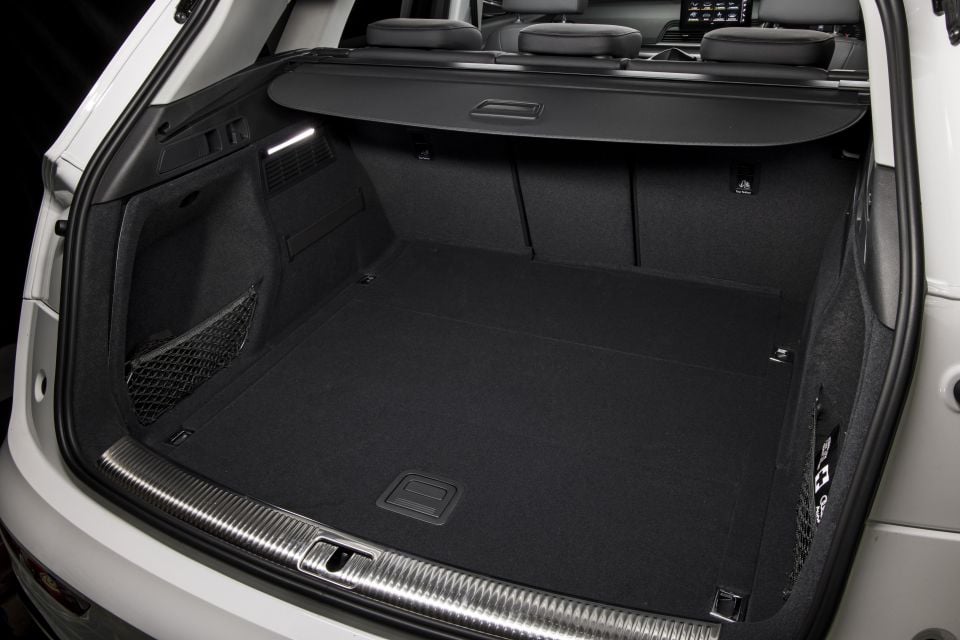
However, legroom is a little tighter behind the kid-friendly hard plastic seat-backs – that said, I’m 194cm and was behind my own driving position, so am an outlier.
Some rival SUVs in this segment nevertheless offer greater levels of space.
The clamshell-design tailgate opens electrically and has a kick sensors. Boot space is a decent 520 litres above the temporary spare tyre, and the back seats fold 40:20:40 via handy levers in the cargo area. There are all sorts of nets back there to keep stuff still, and good lighting.
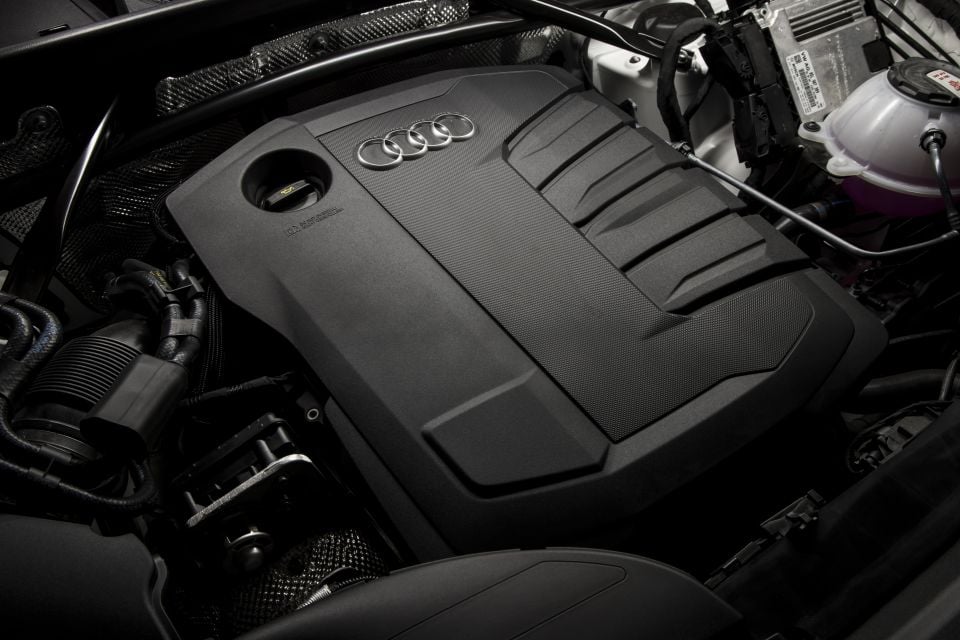
A 2.0-litre turbo-diesel with 120kW of power at 3250rpm, and 370Nm of peak torque between 1500 and 3000rpm.
The Euro 6d engine uses twin dosing to scrub away NOx particulates and uses a 12V “mild-hybrid” system (that name is a stretch) to help smooth and expand the stop/start system.
It’s mated to a S tronic dual-clutch transmission and front-wheel drive (FWD) – unlike the majority of bigger Audis that tend to come with signature quattro all-wheel drive. Staying with FWD cuts weight and fuel use.
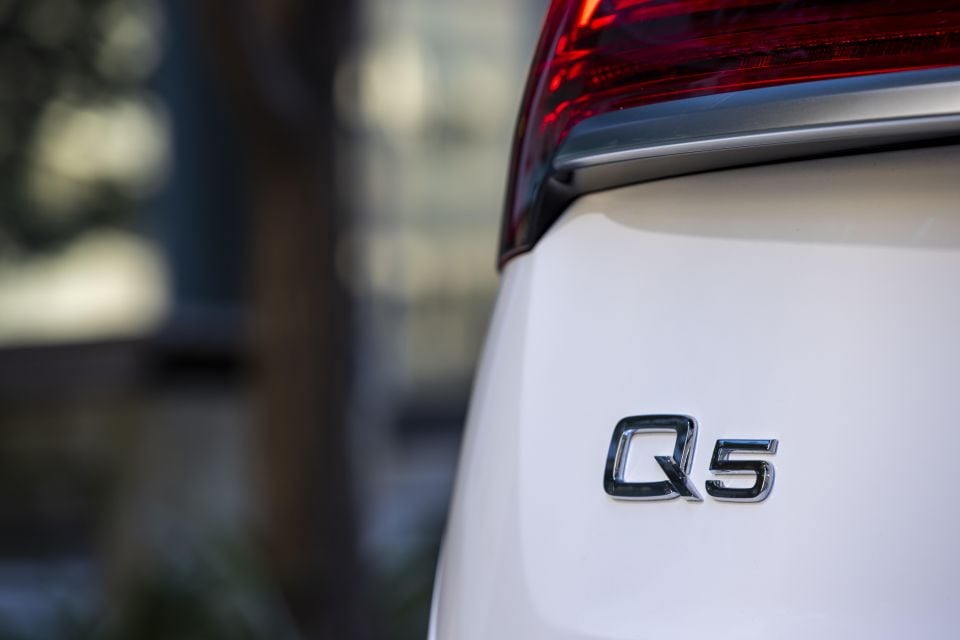
The 100km/h time is 9.0 seconds, while the combined cycle fuel economy on the Australian Design Rule test standard is 4.8 litres per 100km, tumbling to 4.4L/100km on highways.
For what it’s worth my average was 5.9 litres per 100km on a mixed route, and I never got below 5.0L/100km for sustained periods. So it’s bloody frugal, but not quite so frugal as claimed.
The maximum tow rating is 2000kg with trailer braking.
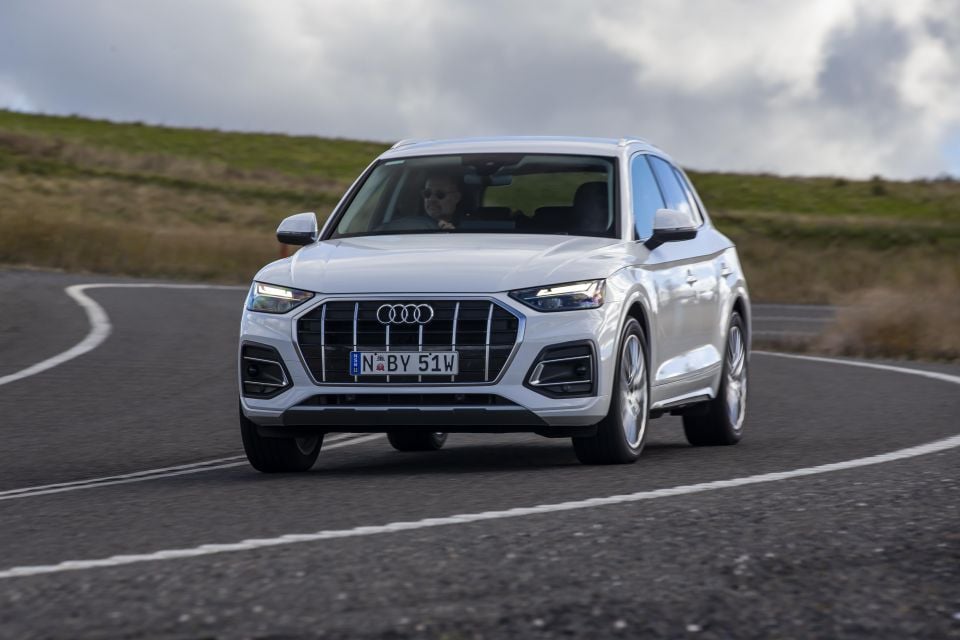
The base Q5 has few sporting aspirations, but instead focuses on efficiency and comfort to make for an urbane runner of errands and road trips alike.
There’s moderate diesel clatter, but it’s pretty refined as far as these things go, and the stop/start system is both smooth and regularly activated – both at idle and when rolling at low-resistance.
While not bristling with power or torque like some of its more expensive Q5 brethren, there’s sufficient torque there across a wide enough rev band to make for relaxed cruising.
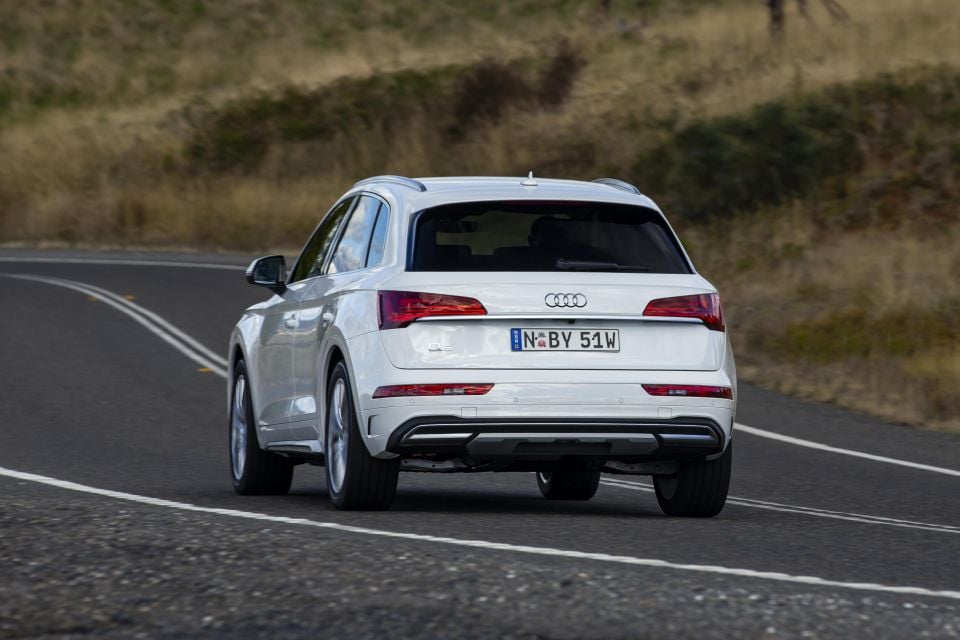
The dual-clutch transmission generally behaved itself, and integrated smoothly with the drivetrain at low speeds bar one slightly abrupt shifting decision over my drive loop.
Its quick and smooth shifts once rolling also mean progress under heavy throttle is better than stately – at 9.0 seconds zero to 100km/h.
The absence of quattro all-wheel drive feels strange in a Q5, but on the plus side there’s no axle tramping or torque steer through the driven front wheels, because there isn’t enough oomph to elicit either.

Where expert car reviews meet expert car buying – CarExpert gives you trusted advice, personalised service and real savings on your next new car.
In terms of fuel consumption I averaged 5.9 litres per 100km on a 136.7km mixed-cycle drive loop at an average speed of 49km/h, which is about what I’d expect of a RAV4 hybrid. The 4.8L/100km claim seems far fetched, but this is one frugal SUV regardless.
Given the average Australian does around 300km per week, a typical buyer can expect monthly fillups to be part of their regular routine.
Despite the lowish-profile (255/45) tyres, the ride quality was pretty good: not exactly cushy per se, but neither brittle nor jarring over potholes and expansion joints. Likewise, road and wind noise was well suppressed.
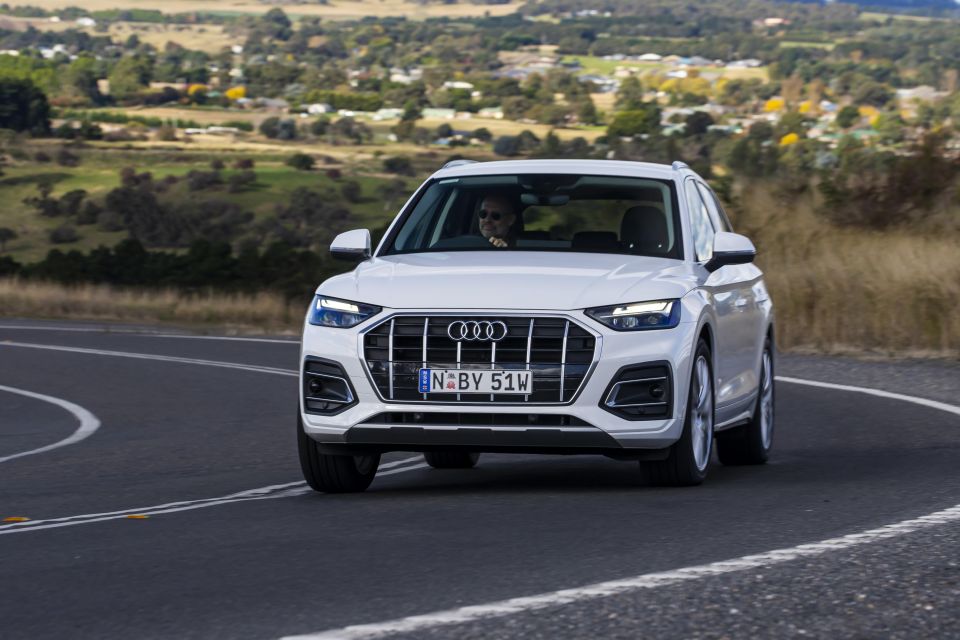
The electromechanical steering has speed-dependent assistance, so feels very light and easy to pilot at lower speeds.
There’s never much feedback, even at a decent clip, and this means it’s never a fun car to drive like a BMW X3 can be, or Alfa Romeo Stelvio to use a more niche example. Does this matter?
Suspension at each end comprises coils and passive damping, five linkages, and tubular anti-roll bars. Body control and handling against cornering loads is generally well controlled, without feeling too tamped-down.
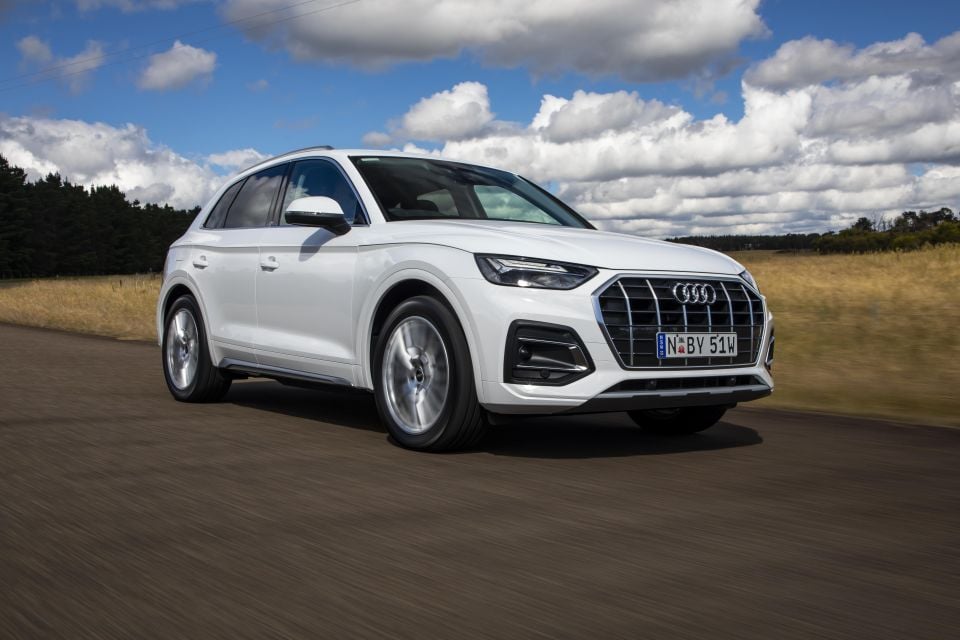
The Audi active lane assist system uses steering intervention to nudge the car between the road lines, and is easy to engage or disengage via a simple button press rather than digging through screen menus.
But on the topic of driver-assist functionality, the absence of adaptive cruise control is quite strange.
I actually prefer conventional passive cruise control, but a Volkswagen Polo I drove around the same time has adaptive cruise, and with this context it’s hard to argue for its absence in the much more expensive Audi Q5…
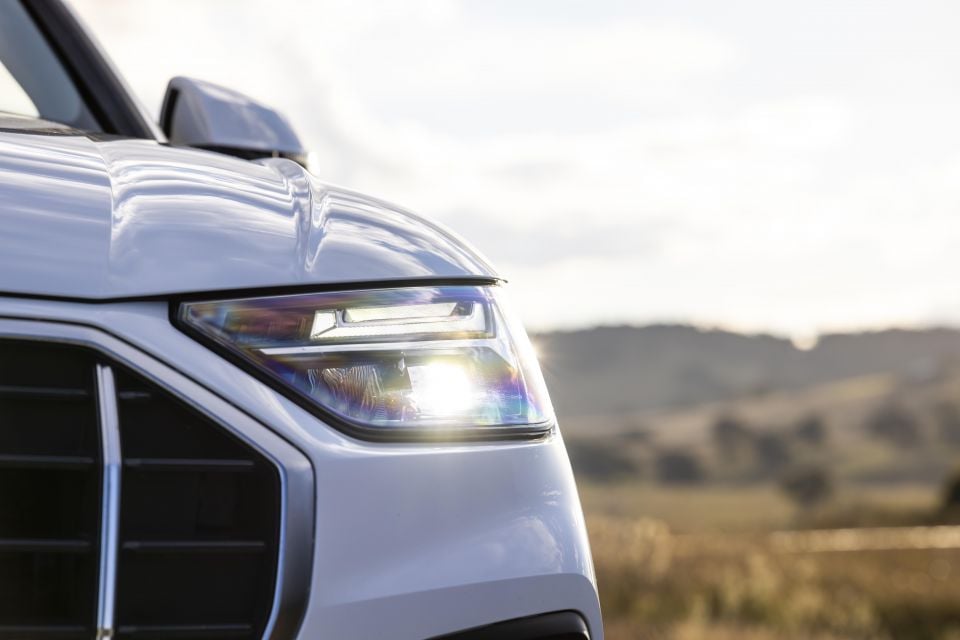



Exterior
Interior
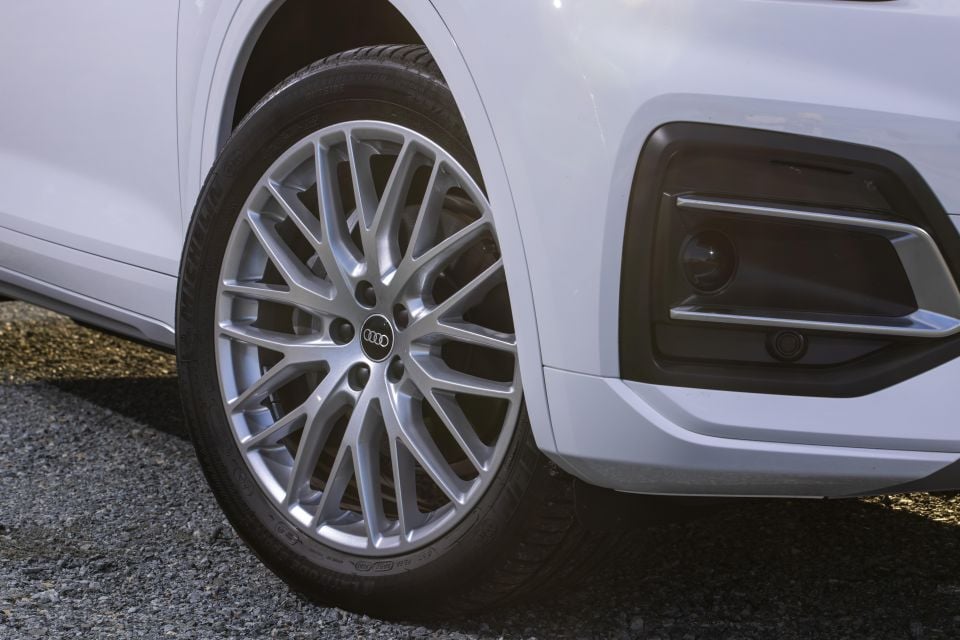

Infotainment
Options
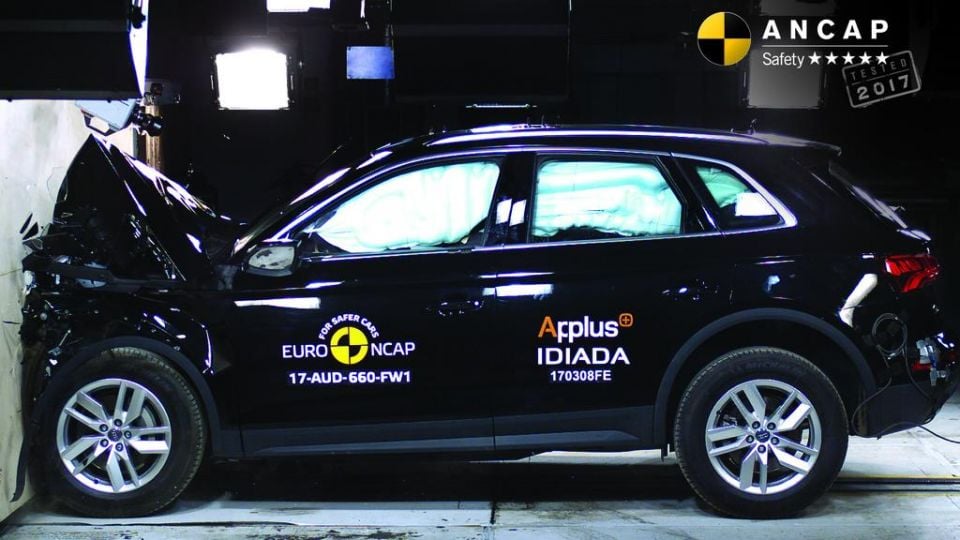
Crash tester ANCAP awarded the current-shape Audi Q5 five stars in 2017, handing it 93 per cent for adult protection, 86 per cent for child protection, 73 per cent for pedestrian protection, and 58 per cent for safety assist features.
You can read the detailed crash report here.
Standard safety fare includes eight airbags (front, front-side, and front and rear curtains), outboard rear ISOFIX mounts, and three top tether points.
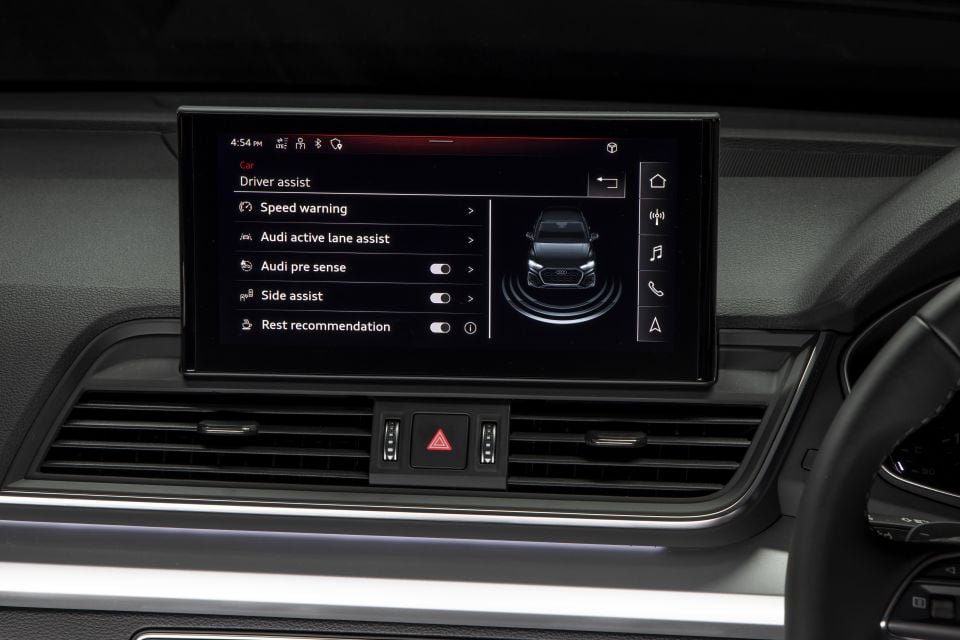
Driver-assist features include:
* Not available at the time of writing due to the semiconductor shortages, according to Audi, which is not ideal frankly.
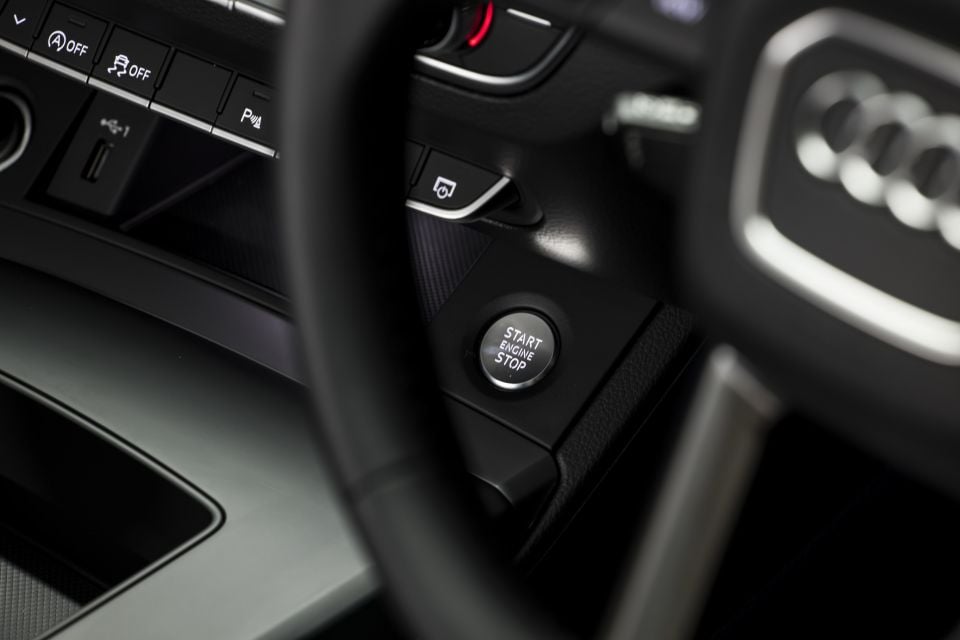
All Audis sold from January 1 this year moved (finally) to a five-year, unlimited-kilometre warranty.
Five-year service plans can be purchased at any time during the first year of ownership for a full-term cost of $3140 on all Q5 models.
That averages out to $628 per service should you visit annually.
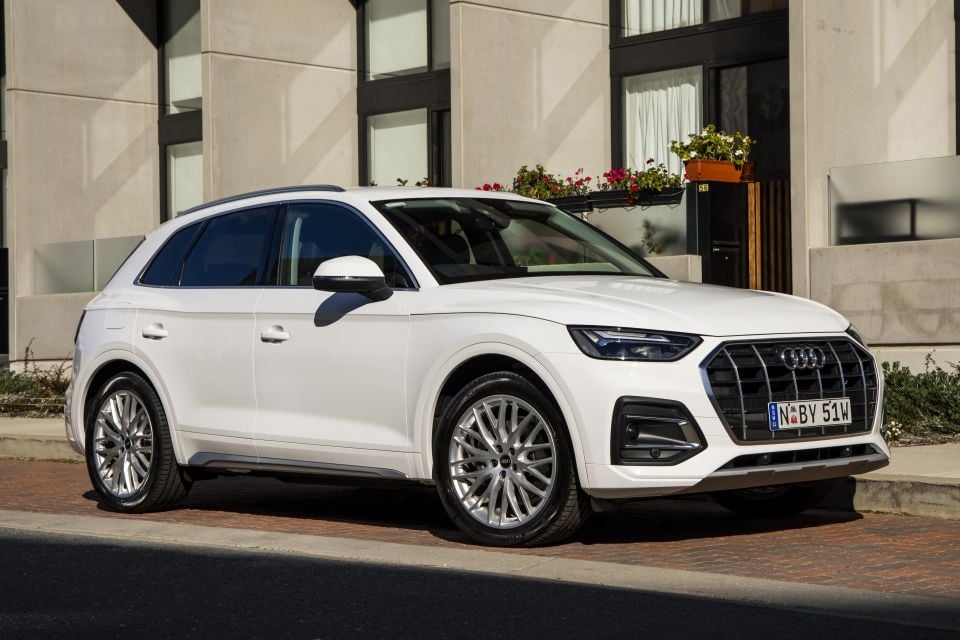
For someone after a subtle, thoughtful, high-quality family car, the Audi Q5 remains appealing.
The Ibis white base model is no excitement machine, but in the context of the luxury SUV market stacks up as a practical and well-made option.
And while diesel is on the nose for some buyers, this car’s efficiency – albeit not as good as claimed – makes a solid case that there’s life in this fuel yet.
There’s also a good chance that the Q5 35 TDI will attract people who might be looking at the top-level of a mainstream mid-sized SUV such as a Mazda CX-5, which offers more kit but less badge prestige.
Fun? No. But good? Yep. And moreover, sensible.

Click on an image to view the full gallery.
MORE: Everything Audi Q5
Where expert car reviews meet expert car buying – CarExpert gives you trusted advice, personalised service and real savings on your next new car.


Matt Campbell
2 Days Ago


Josh Nevett
4 Days Ago


Josh Nevett
6 Days Ago
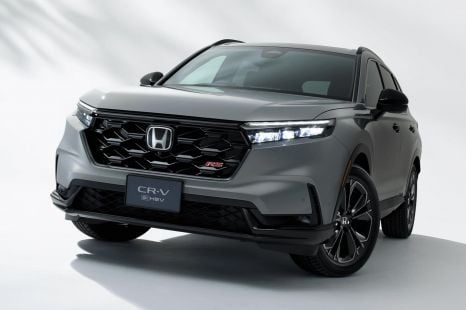

James Wong
8 Days Ago


Derek Fung
8 Days Ago


CarExpert.com.au
11 Days Ago